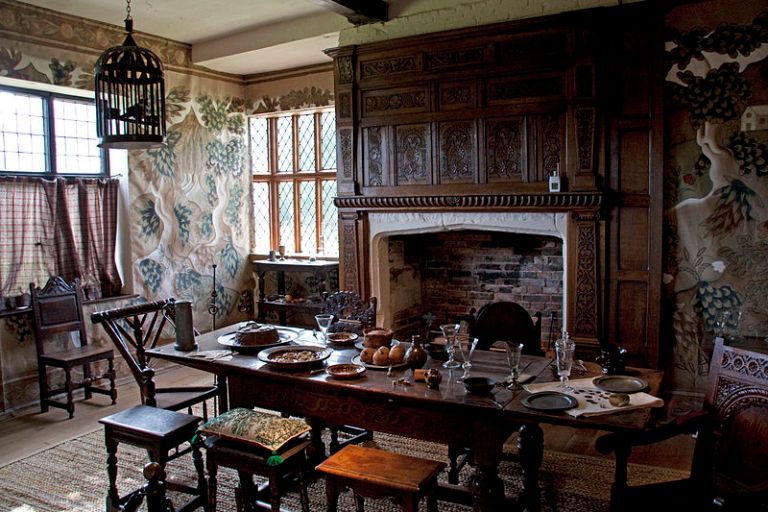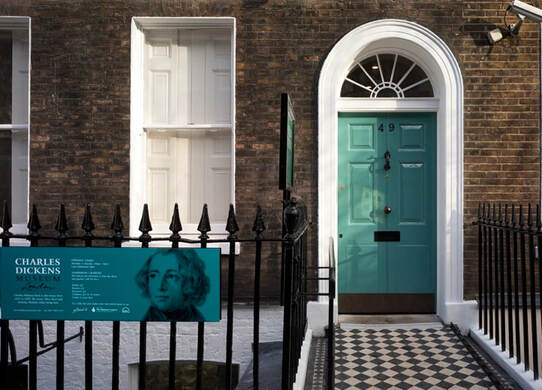house museums
We have chosen a list of houses and house museums which either provide a house history or take the visitor back in time with fixtures and furnishings of a bygone age.The criteria for inclusion on the whole has been is it a family home (although there are some exceptions to show what life might have been like for servants and staff in bigger houses).
On this page are all the house museums in ENGLAND. For SCOTLAND, WALES and IRELAND click here.
We are sure this list is not exhaustive and we thank the contributors to #HouseHistoryHour (every Thursday at 7pm on Twitter) for their suggestions and ask that if you know of any museums we have missed to email here and let us know
On this page are all the house museums in ENGLAND. For SCOTLAND, WALES and IRELAND click here.
We are sure this list is not exhaustive and we thank the contributors to #HouseHistoryHour (every Thursday at 7pm on Twitter) for their suggestions and ask that if you know of any museums we have missed to email here and let us know
EnglandAvon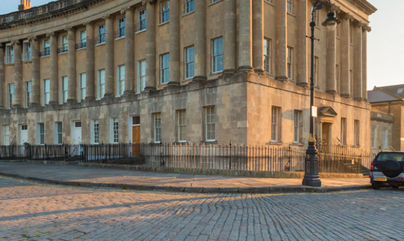
No 1 Royal Crescent, Bath.
Bath Built 1767 and 1774 No.1 Royal Crescent, Bath (Grade I) was built to the designs of John Wood the Younger in 1767 – 1774 as the first house in the Royal Crescent, a Bath stone crescent of thirty houses with a uniform Palladian design to the principal facade. The Royal Crescent is the culmination of the 18th century development of Bath by the elder and younger John Woods, the latter part-owning No.1. The open view in front of the Royal Crescent, a key element to the design, has been altered by the subsequent development of Bath but partly preserved in the form of what is now Royal Victoria Park and a small semi-circular lawn in the ownership of the Royal Crescent residents. Royal Crescent is a museum which has been decorated and furnished just as it might have been during the period 1776-1796. Royal Crescent, Bath, Avon BA1 2LR Birmingham
Birmingham Back to Backs Built 1802
The Birmingham Back to Backs are the city's last surviving court of back-to-back houses. They are preserved as examples of the thousands of similar houses that were built around shared courtyards, for the rapidly increasing population of Britain's expanding industrial towns. They are a very particular sort of British terraced housing. This court, at 50–54 Inge Street and 55–63 Hurst Street, is now operated as a historic house museum by the National Trust. By the early 1970s, almost all of Birmingham's back-to-back houses had been demolished. The occupants were rehoused in new council houses and flats, some in redeveloped inner-city areas, while the majority moved to new housing estates 55-63 Hurst Street/50-54 Inge Street, Birmingham, West Midlands, B5 4TE 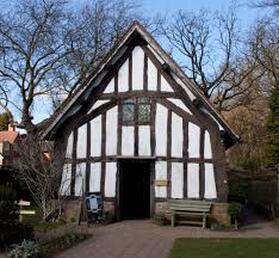
Minworth Greaves
Bourneville Built 1250 Minworth Greaves is a 700 year old medieval hall house it was not always on this site it was originally 14 miles away in Minworth, Warwickshire. Maple Road, Bournville, Birmingham, B30 2AF Selly Manor
Bourneville. Built c1476 Originally calBled 'Smyths Tenement', it was a prosperous house until 1695 when it had a new owner and its slow decline began. By the end of the 19th century, it was divided into three dwellings known as 'The Rookery' and then it fell into disuse. With an uncertain future, George Cadbury, founder of Bournville, saved the building and arranged its move from nearby Selly Oak into his new village where it stands today. Maple Road, Bournville, Birmingham. B30 2AE St Nicolas Place
Kings Norton Built 1492 The building began life as a Tudor Merchant’s House and went through various stages until in 1930 when the then custodians, Mitchells and Butler Brewery, transferred ownership to the Parish of St Nicolas Church, Kings Norton, who are the current custodians. Saint Nicolas' Place, 81 The Green, Kings Norton, Birmingham B38 8RU Birmingham House Museums A fascinating look at House Museums in Birmingham by
leading House Historian Karen Averby. Click here to read Bristol
The Red Lodge Museum
Bristol. Built 1579-80 The Red Lodge was built in the late 1570s for Sir John Young and his wife Dame Joan. It has been restored several times throughout its 400 year history. Originally a lodge to the Great House (which once stood on the site of the present Colston Hall), where Queen Elizabeth I once stayed, the Red Lodge is often described as Bristol's hidden treasure and houses the Great Oak Room, one of the finest rooms in the West Country. The Red Lodge, The Red Lodge Museum,Park Row,Bristol BS1 5LJ 
The Georgian House Museum
Bristol Built 1790 The Georgian house is an 18th century, six storey townhouse in the centre of Bristol that has been restored and decorated to its original glory. The house was built in 1790 for John Pinney, slave plantation owner and sugar merchant, it was also where the enslaved African, Pero lived. It is displayed as it might have looked in the 18th century with an insight into life above and below stairs. The Georgian House Museum, Great George Street, Bristol, BS1 5RR Cambridgeshire
Pepys House
Brampton Built late C16 or early C17 Once a yeoman's farmhouse on the edge of the village, now known as Pepys House, had been built in the late 16th century, to judge by its structure and the mural paintings in the hall and west bedroom. Pepys House, Huntingdon Road, Brampton, Hinchingbrooke, Brampton PE28 4PB Cumbria
Dove Cottage
Grassmere Built early 17th century A ittle cottage, in the heart of the remote Lake District where William Wordsworth wrote some of the greatest poetry in the English language and Dorothy kept her famous 'Grasmere Journal', now on display in the Museum. Dove Cottage provides a sense of that time: stone floors, dark panelled rooms, glowing coal fires and the family’s own belongings. Little has changed in the house since the Wordsworths lived here. Dove Cottage, Grasmere, Cumbria, LA22 9SH Derbyshire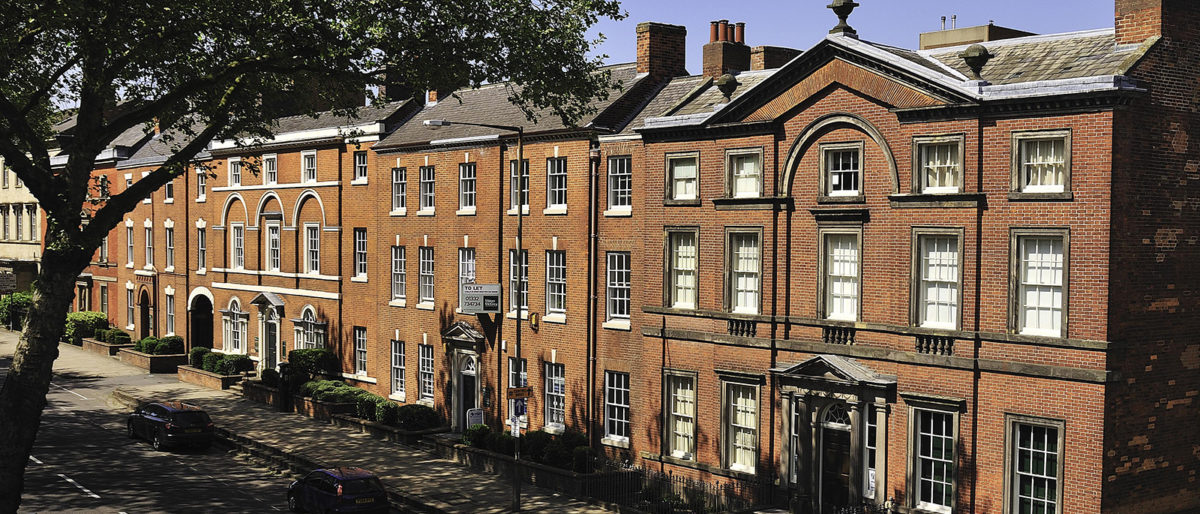
Pickford House
Derby Built 1770 Hidden amongst the gorgeous old buildings and cobbled pavement of Friar Gate sits Pickford’s House; the professional showcase and family home of Georgian architect Joseph Pickford. Now the museum illustrating aspects of domestic life from the 18th to the 20th centuries, Pickford’s House shows the contrast between the master and the servant, the grandeur of Georgian architecture and the changes that occurred in the house over its 250-year life. 41 Friar Gate, Derby DE1 1DA East Sussex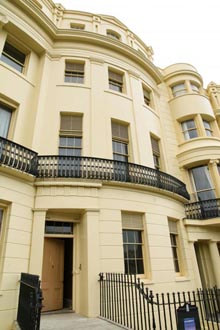
The Regency Town House
Hove Built 1829 The Regency Town House is a Grade 1 listed terraced property built in the 1820s as part of architect Charles Busby's 'Brunswick Estate'. Today it is being developed as a museum and heritage centre with a focus on the architecture and social history of Brighton & Hove between the 1780s and 1840s. 13 Brunswick Square, Hove Gloucestershire
Dr Jenners House
Berkeley Built c1740 Edward Jenner was an English doctor, the pioneer of smallpox vaccination and the father of immunology. The Edward Jenner Museum at The Chantry is the house that Edward Jenner owned from 1785 until his death in 1823. The house that you see today dates from 1740s. It is thought there has been a building here since at least the Anglo-Saxon period. The Chantry Church Lane, Berkeley GL13 9BN Hampshire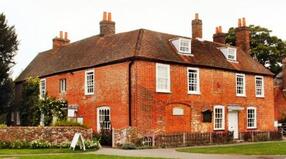
Jane Austens House
Chawlton Built 17th Century Jane Austen is one of the most popular and important novelists that England has ever produced and the house at Chawton is where she spent the last eight years of her life. It is of international importance as the place where she did the majority of her mature writing, but at the same time retains the charm of a village home. A 17th century house, it tells the story of Jane Austen and her family. Chawlton, Alton, Hampshire GU34 1SD Liverpool
Sudley House
Algburth Built 1824 Sudley House has been described as a hidden gem. Tucked away in leafy suburbs, Sudley is the only house of a Victorian merchant that still has its original pictures, including works by Millais, Turner and Rossetti, and with beautiful period furniture, carpets and wallpaper it doesn't feel like a regular gallery. There is also a childhood room, a small world room and a costume room, which often house temporary displays, and tearooms. Admission is free Mossley Hill Road | Aigburth, Liverpool L18 8BX, England London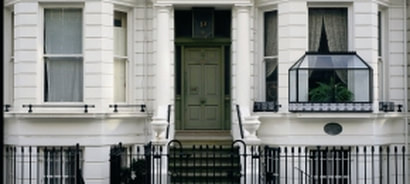
18 Stafford Terrace
London Built 1870s From 1875, 18 Stafford Terrace was the home of Punch cartoonist Edward Linley Sambourne, his wife Marion, their two children and their live-in servants. The house gives an insight into the personal lives of the Sambourne family, and also provides a rare example of what was known as an 'Aesthetic interior' or 'House Beautiful' style. 18 Stafford Terrace, W8 7BH London 
Willow Road
Hampstead. Built 1939 Innovative and influential Modernist home designed by architect Ernö Goldfinger in 1939 for himself and his family. 2Willow Road Hampstead, London, NW3 1TH 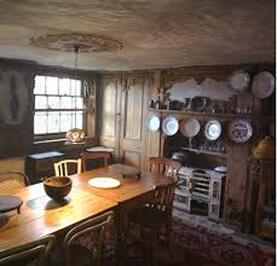
575 Wandsworth Road
Lambeth. Built early 19th Century. 575 Wandsworth Road was acquired by the National Trust in 2010, because of the rich and striking interiors created by Khadambi Asalache (1935-2006), a Kenyan-born poet, novelist, philosopher of mathematics and British civil servant. He bought the house in 1981 while working at the Treasury, and over a period of 20 years (from 1986) turned his home into a work of art. 575 Wandsworth Road, Lambeth, London, SW8 3JD London 
Benjamin Franklins House
Kensington Built c1730 Built as a lodging house, in the twentieth century 36 Craven Street is a dynamic museum and educational facility highlighting the timeless relevance of Benjamin Franklin and the tumultuous times in which he lived. 36 Craven St, London WC2N 5NF Carlyles House
Chelsea Built 1708 Hidden in the quiet back streets of Chelsea is the home of Thomas and Jane Carlyle.A twist of fate turned Carlyle into a star of the 19th-century literary world. Suddenly this was the place to be. When you pull the bell to enter you will follow in the footsteps of Dickens, Ruskin, Tennyson and many more. 24 Cheyne Row, Chelsea, London, SW3 5HLLondon 
John Soane Museum
Holborn Built c1790 Sir John Soane's Museum is a house museum, located next to Lincoln's Inn Fields in Holborn, London, which was formerly the home of neo-classical architect, John Soane. 13 Lincoln's Inn Fields, London WC2A 3BP 
Dr Johnsons House
London Built c 1690 Dr Johnson's House is a charming 300-year-old townhouse, nestled amongst a maze of courts and alleys in the historic City of London. Samuel Johnson, the writer and wit, lived and worked here in the middle of the eighteenth century, compiling his great Dictionary of the English Language in th e Garret 17 Gough Square, London, EC4A 3DE Leighton House Museum
Holland Park Built 1866–95 Leighton House Museum is the former home of the Victorian artist Frederic, Lord Leighton (1830-1896). The only purpose-built studio-house open to the public in the United Kingdom, it is one of the most remarkable buildings of the nineteenth century, containing a fascinatingcollection of paintings and sculpture by Leighton and his contemporaries. 12 Holland Park Road, London W14 8L 48, Doughty Street
Holborn Built c1800 The Charles Dickens only surviving London residence at 48 Doughty Street. When he moved in in March 1837, 48 Doughty Street was a relatively new Georgian terrace house not far from the outskirts of London. 48 Doughty Street. Holborn London 
The William Morris Gallery
Walthamstow Built 1740's The William Morris Gallery is housed in a Georgian house, built in the 1740s and set in Lloyd Park in Walthamstow, in north-east London. The grade II* listed building was Morris's family home from 1848 to 1856. The only public Gallery devoted to William Morris, it reopened in August 2012 following a major redevelopment Lloyd Park, Forest Road, London E17 4PP William Hogarth House
Chiswick. Built 1715-19 Hogarth's House is in Chiswick, built around 1700 and was the country home of the great painter, engraver and satirist William Hogarth (1697 - 1764) from 1749 until his death. Hogarth’s House has been open to the public since 1904. For most of its life it has displayed a collection of Hogarth’s prints. Hogarth’s House, Hogarth Lane, Great West Road, London W4 2QN 
The Geffrye Museum
Hoxton Built 1714 The Geffrye Museum focuses on the urban living rooms and gardens of the English middle classes. The collections show how homes have been used and furnished over the past 400 years, reflecting changes in society and behaviour as well as style, fashion and taste. The restored historic almshouse has been fully restored to its original condition, offering a rare glimpse into the lives of London's poor and elderly in former times. Address: 136 Kingsland Road, Shoreditch, London E2 8E 
18 Folgate Street, Dennis Servers House
Spitalfields Built 1724 This house is a time capsule attraction in which visitors are immersed in a unique form of theatre. The ten rooms of this original Huguenot house have been decked out to recreate snapshots of life in Spitalfields between 1724 and 1914. An escorted tour through the compelling ‘still-life drama’, as American creator Dennis Severs put it, takes you through the cellar, kitchen, dining room, smoking room and upstairs to the bedrooms. With hearth and candles burning, smells lingering and objects scattered apparently haphazardly, it feels as though the inhabitants had deserted the rooms only moments before. The Dennis Severs House tour is unsuitable for children as tours are conducted in silence 18 Folgate St, Spitalfields, London, E1 6BX18 Folgate St, Spitalfields,London, E1 6BX 19 Princlet Street
Tower Hamlets Built 1719 Built in 1719 this 'brick messuage' became the home of the Ogier family, who had escaped from persecution in France. They entered the silk weaving trade and prospered mightily. As most Huguenots moved on, the elegant Georgian houses were sub-divided into lodgings and workshops. At 19 Princelet Street the attic windows were altered to let in more light for weavers to work, but later occupants of the house followed other trades and professions, including Mrs Mary Ellen Hawkins who used it as an industrial school, and Isaiah Woodcock who was a carver and gilder. 19 Princelet Street, London E16QH Manchester
The Pankhurst Centre, 60–62 Nelson Street
Manchester Built c 1850 The Pankhurst Centre is an iconic site of women's activism, past and present. Emmeline Pankhurst and her family lived at number 62 Nelson Street from 1898 until 1907, and the first meeting of the movement that became known as the suffragettes took place in the parlour of this house! 60-62 Nelson Street, Manchester, M13 9WP NorfolkCherry Tree Cottage
Dereham Built 1853 Part of the Gressenhall Farm & Workhouse Museum of rural Life Cherry Tree Cottage was built in 1853 to house elderly married couples in the workhouse. This was the first sign of a relaxation of the strictly enforced segregation introduced following the 1834 Poor Law Amendment Act. The kitchen, parlour, bedroom and scullery are all furnished to give it the appearance of a typical rural home from the 1930s. The adjacent cottage garden reveals just how a rural family of the period would have helped to supplement a low agricultural wage - a small herb patch providing flavour for the monotonous diet of vegetables and stews. Gressenhall Farm and Workhouse, Gressenhall, Dereham, NR20 4DR Nottinghamshire
Mr Straw's House
Worksop. Built 1905 This house in Blyth Grove is a hidden treasure, a National Trust property unlike any other in its ownership. A 1920s house belonging to a world where time has stood still For 60 years the family threw little away and chose to live without many of the modern comforts we take for granted. Photographs, letters, Victorian furniture and household objects spanning 100 years can still be seen exactly where their owners left them. 5-7 Blyth Grove, Worksop, S81 0JG , West Midlands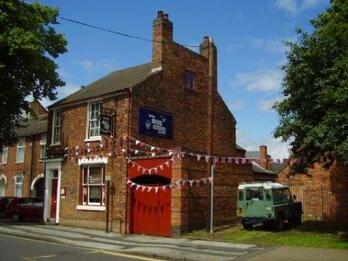
The Locksmith's House
Wallsall Built 1840 The Locksmiths House celebrates the efforts of the small family run lock making businesses which thrived over a century ago. Working from the back yards of their own houses, hundreds of small family businesses evolved. A visit to The Locksmith's House will demonstrate how such a business operated alongside family life. The Locksmith's House is located in Willenhall, near Walsall in the West Midlands. It is found on the B4464 in Willenhall, on New Road (off Somerford Place).Visits must be pre-booked Black Country Living Museum
Dudley The Black Country Living Museum is an award-winning open air museum that tells the story of one of the very first industrialised landscapes in Britain. Set across 26 acres, you'll explore over forty carefully reconstructed shops, houses and industrial areas that represent the Black Country's story. Tipton Road,Dudley,West Midlands,DY1 4SQ West Sussex
Weald & Downland Open Air Museum
Singleton Not one house but many traditional buildings all set in a glorious rural landscape that tell the story of the men, women and children who lived and worked in them over a 600-year period. You can explore the 50-acre site and visit some of our 50 exhibit buildings. Many of our exhibit houses are furnished to recreate historic domestic interiors. Weald & Downland Open Air Museum, Chichester, PO18 0EU Yorkshire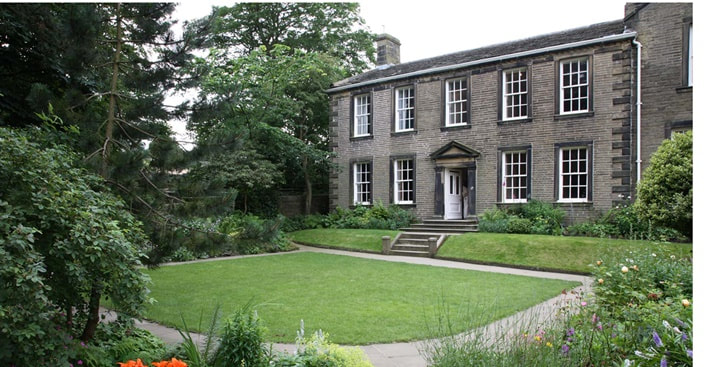
Brontë Parsonage Museum
Haworth Built 1778-9 Home of the Bronte family and now maintained by the Brontë Society in honour of the Brontë sisters – Charlotte, Emily and Anne. The museum is in the former Brontë family home, the parsonage in Haworth, West Yorkshire, England, where the sisters spent most of their lives and wrote their famous Church Street, Haworth, Keighley,West Yorkshire,BD22 8D West Yorkshire 
Fulneck Moravian Museum
Pudsey Built 1744 A museum of artefacts concerning the history of the Fulneck Settlement and the Moravian Church worldwide Fulneck Moravian Church, Fulneck, Pudsey, West Yorkshire, LS28 8NT 
Shibden Hall
Halifax. Built 1420 Shibden Hall dates back to 1420 and offers visitors a fascinating journey through the lives of the people who lived and worked here, including the noted diarist Anne Lister (1791 - 1840) Lister’s Road, Halifax,HX3 6XG Worcestershire
Avoncroft Museum of Historic Buildings
Bromsgrove The Museum is spread over 19 acres of beautiful Worcestershire countryside and home to over 30 rescued and rebuilt buildings including an 18th century cottage & forge, prefab, and medieval town house, It is all set amongst a wildflower meadow, period gardens and a traditional cider and Perry orchard. In 1967 Avoncroft Museum was opened to the public following the rescue and reconstruction of a medieval merchant’s house from Bromsgrove, and soon became England’s first open-air museum. Over five decades, Avoncroft Museum has continued to rescue structures where this had not been achievable and the museum now displays and cares for over twenty five historic buildings that range in date from Worcester Cathedral’s fourteenth century Guesten Hall roof to a post second world war prefab from Birmingham, covering over 700 years of Midlands history. Stoke Heath, Bromsgrove, Worcestershire B60 4JR |
|
Many of the photos containedi n site are original and copyright tracemyhouse. Some have been copied and wherever possible the owners permision has been sought to use them and the ownership is acknowleged but in certain cases this has not been possible because we have been unable to find a link or is an oversight for which we apologise unreservedly and welcome feedback so we can put matters right.
The HouseLand Registry
Maps Manorial Records Other Records Postcards & Photos Enclosures Books & House histories Church & Parish Records |
The People |
|
OUR ADVERTISING POLICY - This website receives no funding or any other form of award and is run voluntarily to provide information to those who want to trace the history of their house. We would like to say thank you to all those who have or will in future click on the advertisements they find on this page. We know they can be a nuisance or distraction and we try to make sure that they are relevant to the information we provide and our readers. However the modest income we receive from them keep the web site going. So thank you.
